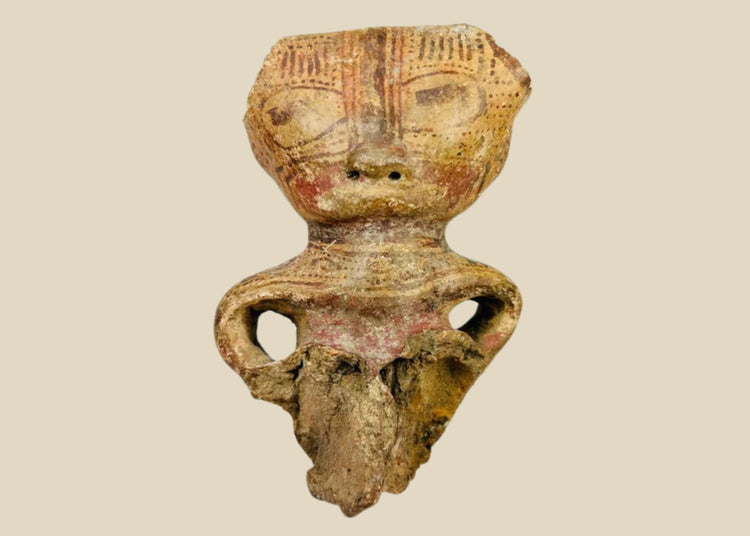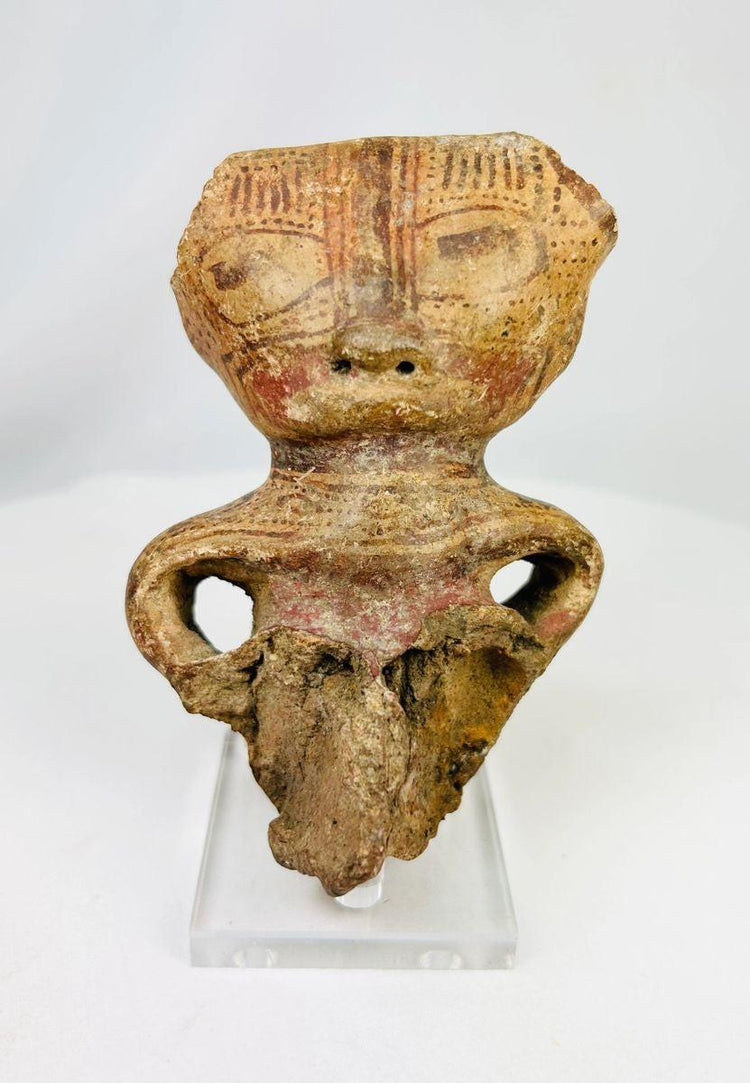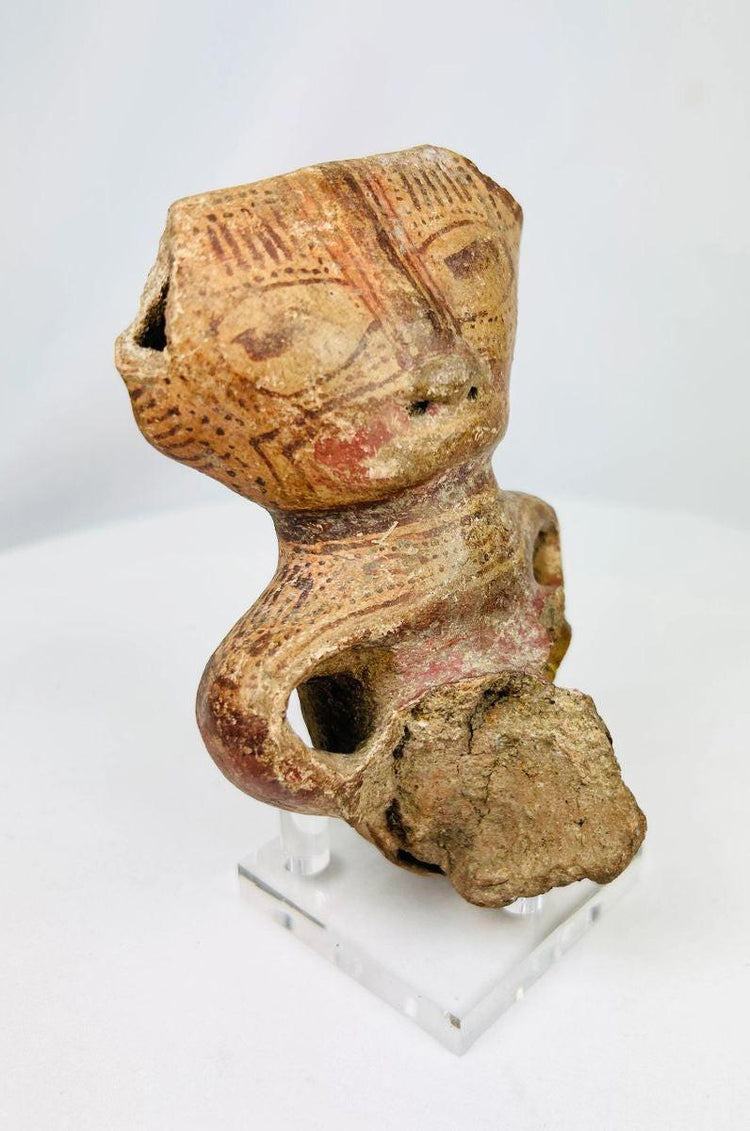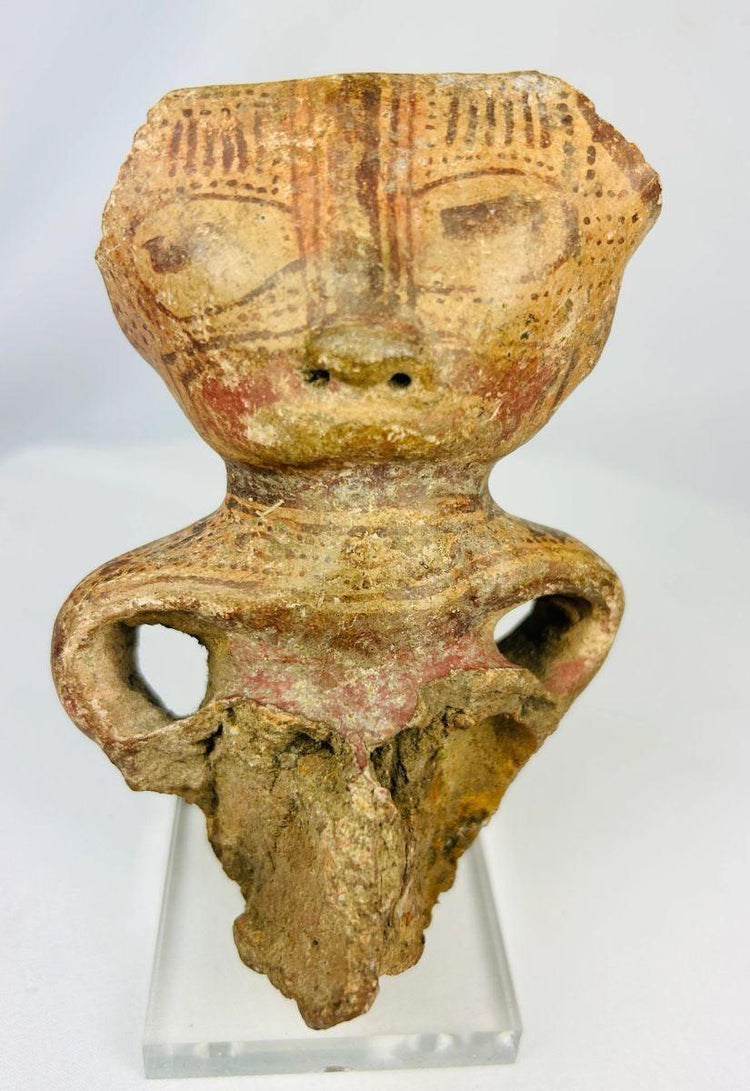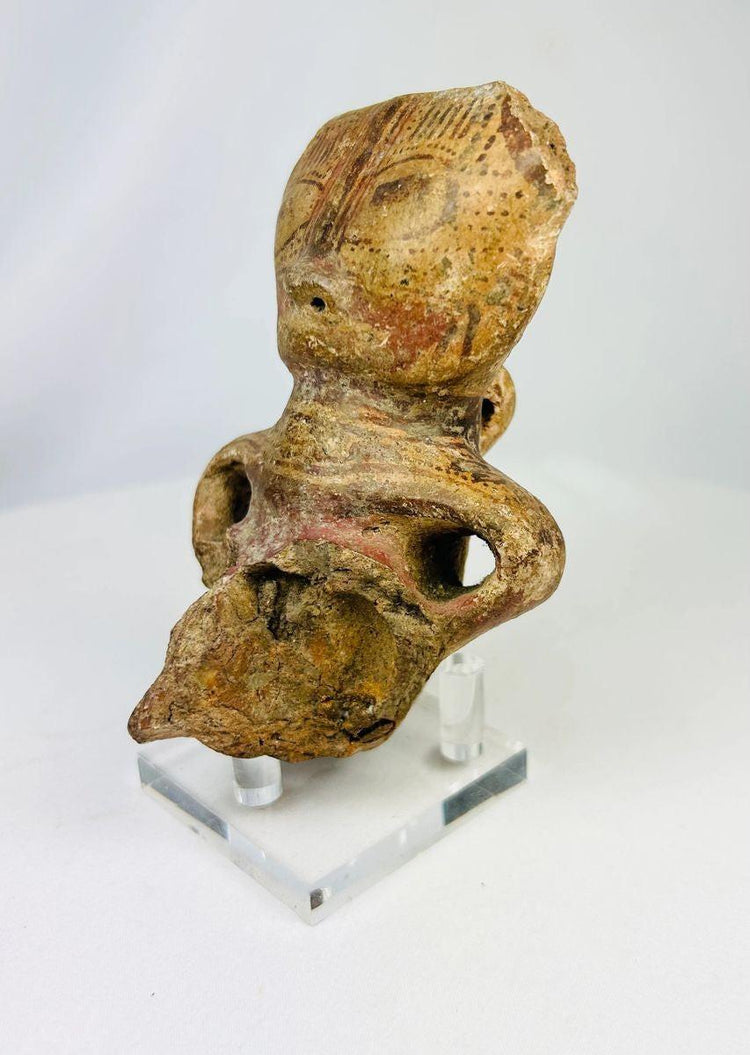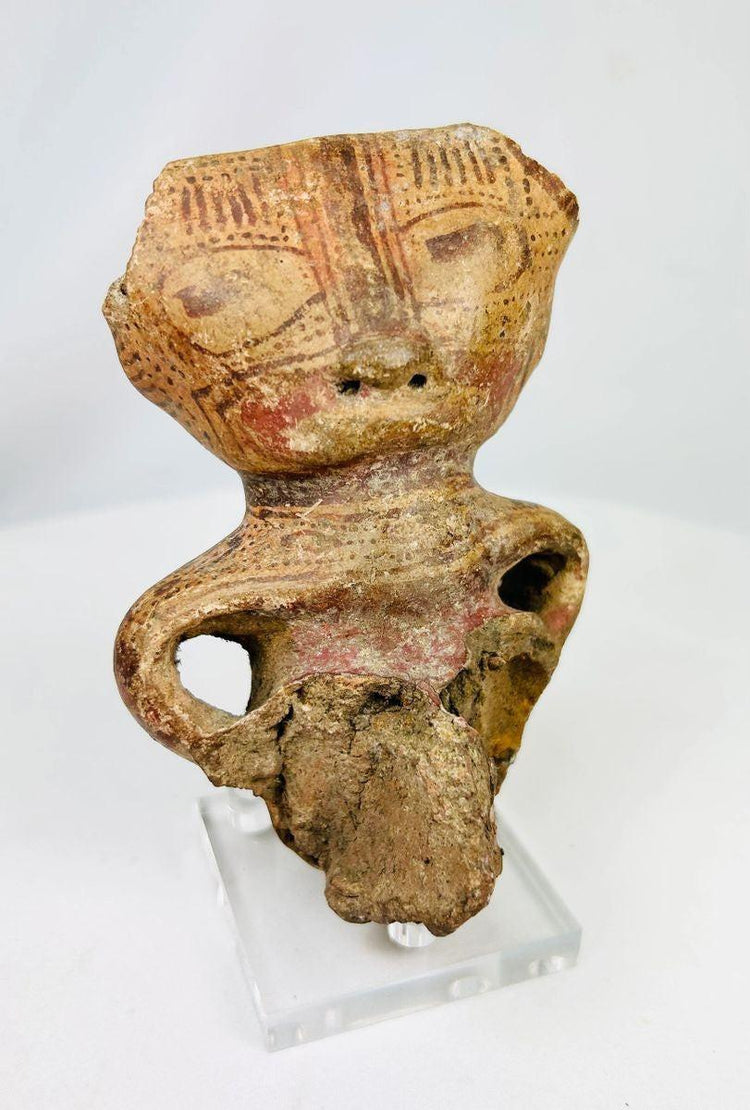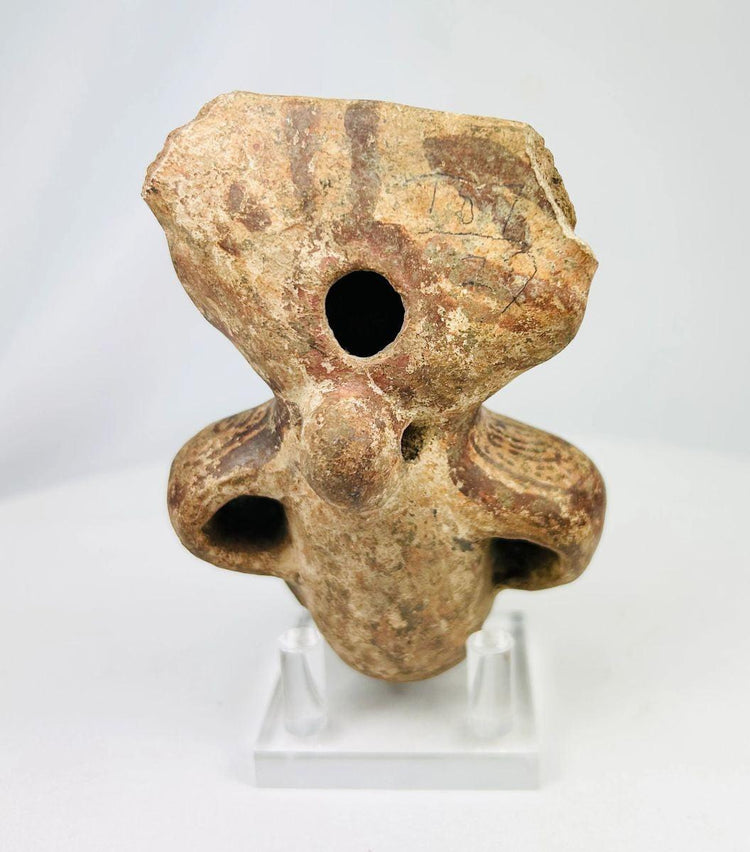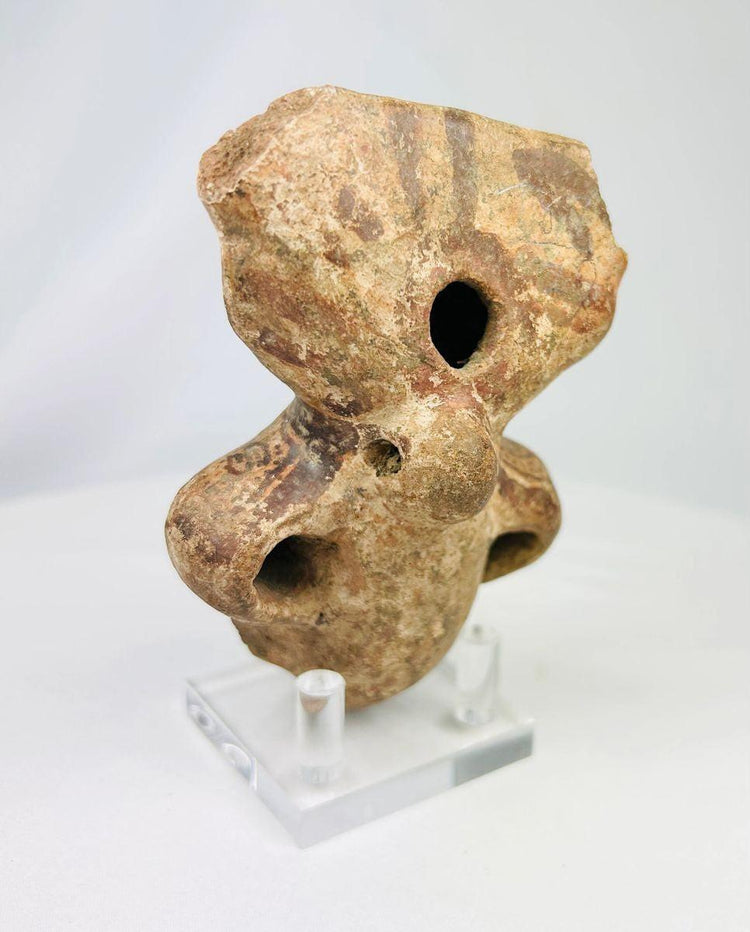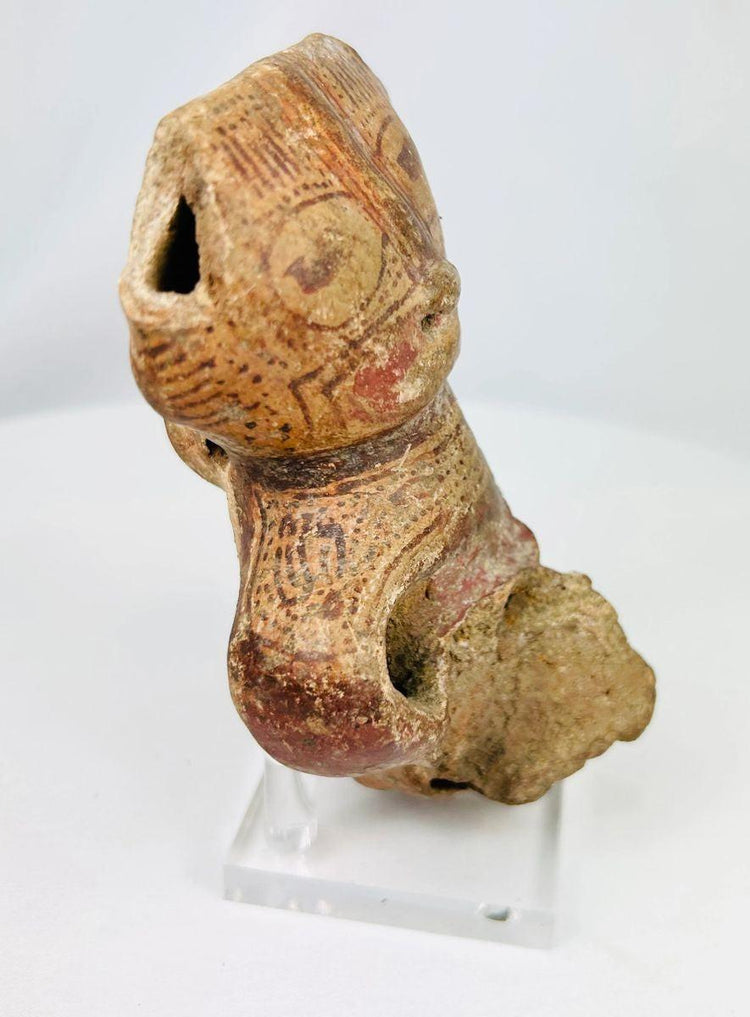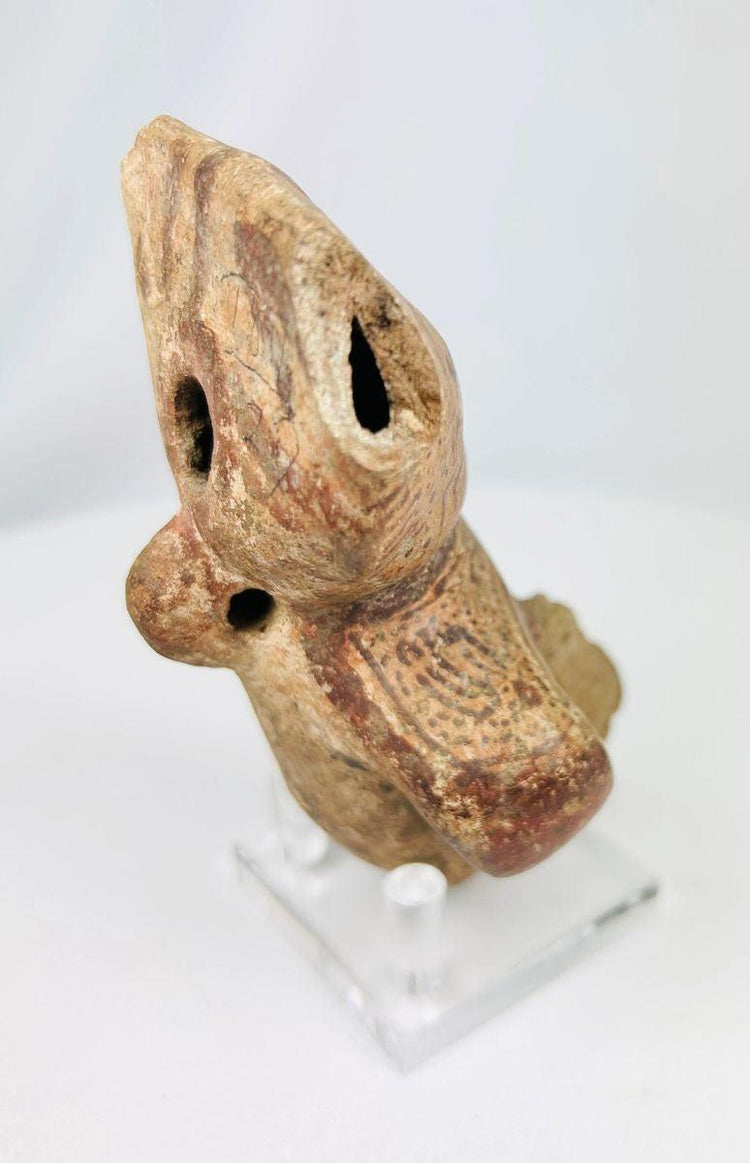Fragmento de estatuilla de terracota precolombina del oeste de México | Circa 300 a. C. - 300 d. C.
Descripción
Más
Menos
Contexto histórico y origen
Región: Occidente de México (Nayarit o Jalisco)
Material: Terracota bruñida con pigmentos minerales.
Periodo: Formativo Tardío a Clásico Temprano, alrededor del 300 a. C. – 300 d. C.
Descripción
Esta rara figura fragmentaria de terracota, con cabeza y torso, ejemplifica la expresiva maestría de las culturas de las tumbas de tiro del oeste de México. La figura está adornada con intrincados diseños lineales pintados en rojo y negro sobre una superficie de arcilla beige, probablemente representando tatuajes o marcas ceremoniales. Los amplios ojos almendrados, las fosas nasales perforadas y la decoración facial geométrica reflejan la estética estilizada de las antiguas tradiciones de Nayarit y Jalisco. Aunque incompleta, la figura conserva una imponente presencia e integridad arqueológica, con restos funerarios visibles y pátina que realzan su autenticidad.
Características
- Ojos estilizados en forma de almendra y fosas nasales perforadas.
- Motivos lineales pintados de rojo y negro que se asemejan a tatuajes o marcas ceremoniales.
- Cuerpo hueco formado con sección de torso sobreviviente
- Fuerte pátina de entierro con incrustaciones minerales.
- Carácter arqueológico consistente con excavaciones de tumbas de pozo.
Importancia cultural
Las figurillas de este tipo se enterraban tradicionalmente en tumbas de pozo profundo como acompañantes del difunto, simbolizando ancestros, deidades o participantes en ceremonias. Sus motivos pintados a menudo enfatizaban la transformación espiritual, el linaje o la identidad comunitaria, ofreciendo una perspectiva de las prácticas funerarias y los sistemas de creencias del oeste de México precolombino.
Condición
Estado fragmentario con pérdidas en la cabeza y la parte inferior del cuerpo. La superficie pintada original permanece parcialmente visible, con desgaste por enterramiento, acumulaciones minerales e incrustaciones que indican su antigüedad. Estable y apto para exhibición.
Dimensiones (aproximadas)
Altura: 4,5 pulgadas
Edad
Se estima que tiene entre 1.700 y 2.300 años de antigüedad.
Descripción
Contexto histórico y origen
Región: Occidente de México (Nayarit o Jalisco)
Material: Terracota bruñida con pigmentos minerales.
Periodo: Formativo Tardío a Clásico Temprano, alrededor del 300 a. C. – 300 d. C.
Descripción
Esta rara figura fragmentaria de terracota, con cabeza y torso, ejemplifica la expresiva maestría de las culturas de las tumbas de tiro del oeste de México. La figura está adornada con intrincados diseños lineales pintados en rojo y negro sobre una superficie de arcilla beige, probablemente representando tatuajes o marcas ceremoniales. Los amplios ojos almendrados, las fosas nasales perforadas y la decoración facial geométrica reflejan la estética estilizada de las antiguas tradiciones de Nayarit y Jalisco. Aunque incompleta, la figura conserva una imponente presencia e integridad arqueológica, con restos funerarios visibles y pátina que realzan su autenticidad.
Características
- Ojos estilizados en forma de almendra y fosas nasales perforadas.
- Motivos lineales pintados de rojo y negro que se asemejan a tatuajes o marcas ceremoniales.
- Cuerpo hueco formado con sección de torso sobreviviente
- Fuerte pátina de entierro con incrustaciones minerales.
- Carácter arqueológico consistente con excavaciones de tumbas de pozo.
Importancia cultural
Las figurillas de este tipo se enterraban tradicionalmente en tumbas de pozo profundo como acompañantes del difunto, simbolizando ancestros, deidades o participantes en ceremonias. Sus motivos pintados a menudo enfatizaban la transformación espiritual, el linaje o la identidad comunitaria, ofreciendo una perspectiva de las prácticas funerarias y los sistemas de creencias del oeste de México precolombino.
Condición
Estado fragmentario con pérdidas en la cabeza y la parte inferior del cuerpo. La superficie pintada original permanece parcialmente visible, con desgaste por enterramiento, acumulaciones minerales e incrustaciones que indican su antigüedad. Estable y apto para exhibición.
Dimensiones (aproximadas)
Altura: 4,5 pulgadas
Edad
Se estima que tiene entre 1.700 y 2.300 años de antigüedad.
También te puede interesar


























